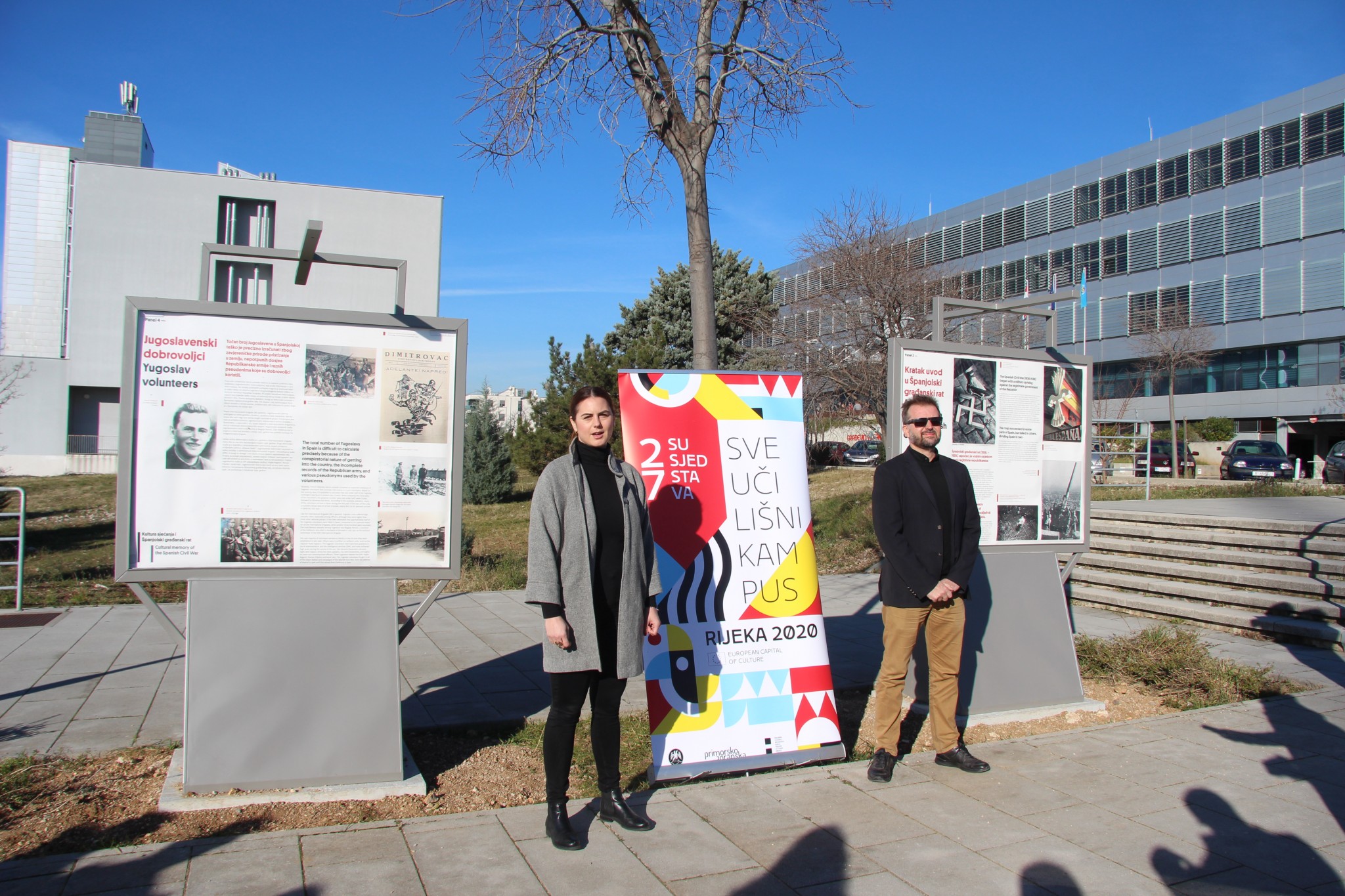The ten double-sided external pop-up exhibition stands, set up along the walkway leading up to the STEP RI (Science and Technology Park Rijeka), tell the story of the Spanish Civil War, which lasted from 1936 to 1939, explain the role of volunteer soldiers from Rijeka, Primorje-Gorski Kotar County, and ultimately from all of Croatia, as well as the role of cultural workers, authors, artists and a variety of activists in this storm of war.
The exhibition “Cultural Memory of the Spanish Civil War” was opened at the Campus of the University of Rijeka on 9 January. The exhibition came to be as a result of the activities of the Campus Creative Team, one of the contributors to the programme of the Campus Neighbourhood, which is one of the 27 Neighbourhoods, a flagship of the European Capital of Culture.
The ten double-sided external pop-up exhibition stands, set up along the walkway leading up to the STEP RI (Science and Technology Park Rijeka), tell the story of the Spanish Civil War, which lasted from 1936 to 1939, explain the role of volunteer soldiers from Rijeka, Primorje-Gorski Kotar County, and ultimately from all of Croatia, as well as the role of cultural workers, authors, artists and a variety of activists in this storm of war.
“In actual fact, this exhibition speaks of a segment of European history and the struggle against fascism, with significant contributions from our locals,” said Vjeran Pavlaković, Associate Professor at the Cultural Studies Department of the Faculty of Humanities and Social Sciences in Rijeka. “It has been 80 plus years since the end of the Spanish Civil War, and the current situation on the global scale is indicative of rising populism and nationalism, showing that these ideas are still very much alive and well today, which is precisely why promoting ideas of anti-fascism, solidarity, dialogue and peace is of paramount importance”,
Pavlaković added.

When it comes to its aim, this exhibition leans on the international conference “Cultural Memory of the Spanish Civil War”, held in Rijeka in June 2019, with the aim of sparking a new understanding of this conflict and of reminding us all of the lessons that can be learned from it, in an effort to prevent these past mistakes from ever happening again.
This exhibition does not aim at glorifying war or offering an ideological interpretation of the past, but at paying homage to the sacrifice of individuals who travelled to an unknown country to defend the values of democracy and humanism in the turbulent times marked by the rise of fascism.
The whole story gets yet another interesting twist when you account for the fact that the location of what is today the University Campus used to be the army barracks until 1991, and that the entire complex was called the Barracks of the Spanish Volunteers – after the volunteer soldiers from the Spanish Civil War. What is more, a bronze monument of a Spanish soldier was erected inside the complex in 1977, during the celebration of the 60th anniversary of the October Revolution in Russia. The base of the sculpture featured an inscription saying No passaran, which has since been taken off and has not been found to this day.
“The long-gone barracks were replaced by the Campus, which promotes quite a different set of ideas, including solidarity, mutual tolerance, and a culture of dialogue, and I do believe that the European Capital of Culture project is a great opportunity for Rijeka to become an even more integral part of the European and global scene, as well as an opportunity for the further growth and development of this city”
, Pavlaković concluded.
The exhibition “Cultural Memory of the Spanish Civil War” will remain open until the beginning of February 2020. It was conceived by Professor Vjeran Pavlaković in cooperation with partners – EUROM – European Observatory on Memories, the University of Barcelona, the Maritime and History Museum of the Croatian Littoral, and students of the University of Rijeka’s Faculty of Humanities and Social Sciences.
